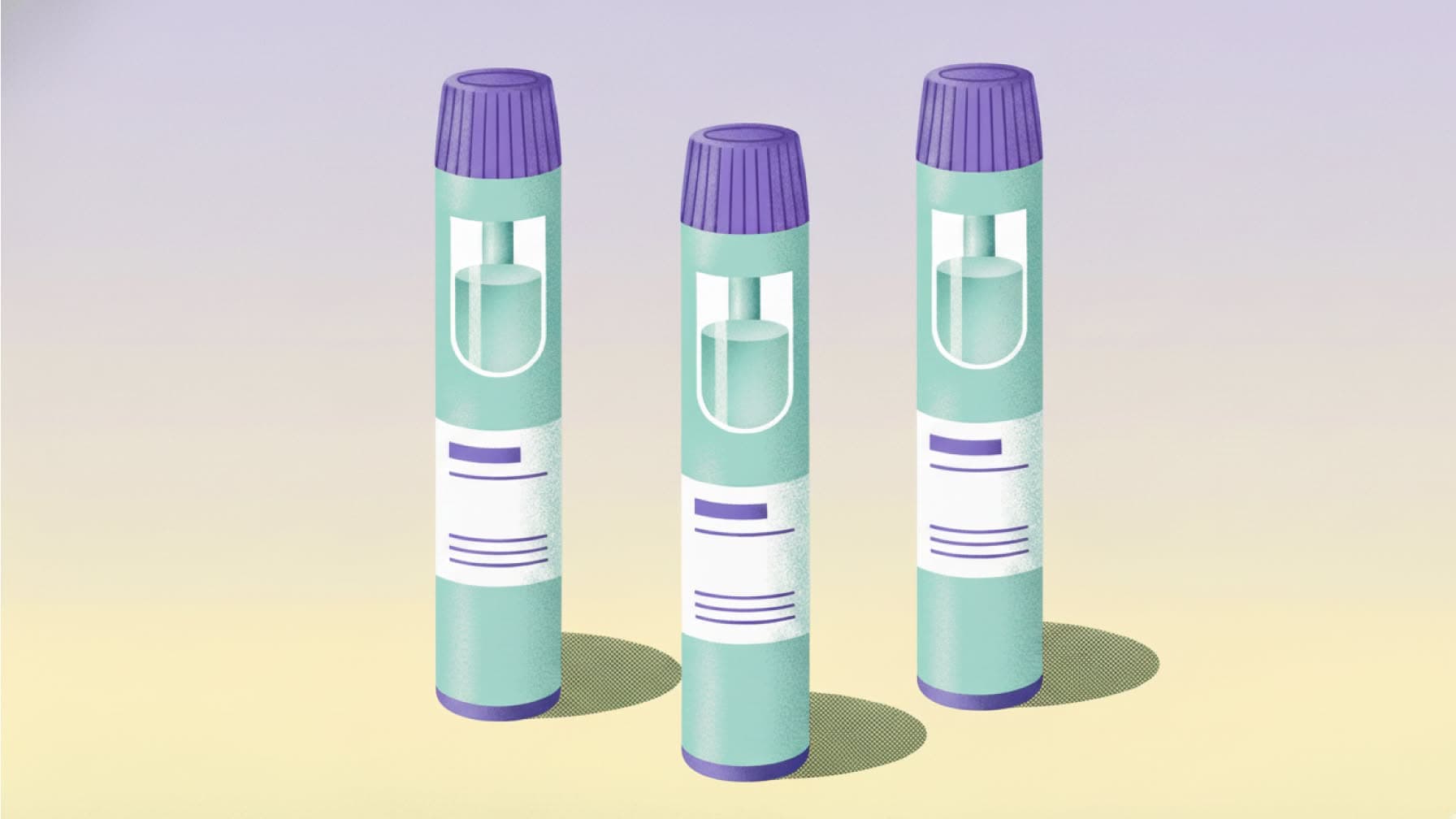Why this matters: Patients starting semaglutide or tirzepatide often ask the same questions: How fast should I ramp my dose? Where do I inject? What if I feel nauseated? This guide explains GLP‑1 titration and injection basics in plain language. We write as one editorial team of clinicians and analysts who study both the science and the day‑to‑day patient experience.
You will learn what titration is and why it reduces side effects, the standard schedules for popular GLP‑1 medications used for weight management, step‑by‑step injection technique, when to slow down, how to store your medication, and how to avoid common dosing mistakes with vials and syringes.
Key takeaway: A slow, structured titration paired with good injection habits prevents most early side effects and keeps your program on track.
GLP‑1 titration 101: why the ramp‑up matters
Titration means gradually increasing the dose over time. For GLP‑1s, titration lets your body adapt to effects on appetite and gastric emptying. The structured ramp reduces nausea, vomiting, and other gastrointestinal symptoms that are more likely when patients move up too quickly. Modern labels recommend dose escalation in 4‑week steps and allow flexibility to pause if a step is not well tolerated.
In practical terms, the first 2 to 3 months are about building tolerance. When symptoms are mild, non‑drug strategies help: smaller meals, more fluids, and pausing at your current dose for an extra 4 weeks before moving up. If symptoms are moderate or severe, contact your prescriber before making changes.
Standard GLP‑1 titration schedules
Below are high‑level reference schedules for two branded GLP‑1 options often used in weight management. Always follow the plan your clinician provides for your situation.
Wegovy (semaglutide) – weekly dose escalation
Weeks 1–4: 0.25 mg once weekly
Weeks 5–8: 0.5 mg once weekly
Weeks 9–12: 1.0 mg once weekly
Weeks 13–16: 1.7 mg once weekly
Week 17 and onward (maintenance): 2.4 mg once weekly is common. Some patients remain at 1.7 mg if that dose balances benefit and tolerability. If a step is not tolerated, delay the next increase by 4 weeks.
Zepbound (tirzepatide) – weekly dose escalation
Start: 2.5 mg once weekly for 4 weeks
Increase by: 2.5 mg every 4 weeks or more, as tolerated
Maintenance range: 5 mg, 10 mg, or 15 mg once weekly, individualized to response and side effects
Key takeaway: Dose every week on the same day, escalate only after at least 4 weeks at a given level, and pause your increase if side effects are getting in the way.
GLP‑1 injection basics: where and how to inject
Where to inject: GLP‑1 injections are subcutaneous. Use the abdomen, thigh, or upper arm. Rotate sites to reduce tenderness or lumps, and avoid areas that are bruised or irritated.
Step‑by‑step for single‑dose pens (Wegovy or Zepbound):
Check the pen: Right strength, intact seal, clear solution.
Wash hands and clean the skin with an alcohol swab.
Choose site and rotate from last week’s spot.
Insert the needle straight in at 90 degrees into pinched skin if needed.
Deliver the dose per the device’s instructions, then keep the needle in place for the recommended hold time to ensure a full dose.
Dispose of the pen or needle in a sharps container.
Record the dose and site to maintain rotation.
Vials and syringes: Some patients receive single‑dose vials of tirzepatide or compounded semaglutide. Use the syringe size your prescriber instructs, and never reuse needles. The FDA has documented dosing errors when people misinterpret milligrams, milliliters, or the “units” scale on insulin syringes. Slow down and double‑check any conversion before injecting.
Troubleshooting side effects and when to hold titration
Common early effects: Nausea, fullness, constipation, diarrhea, and fatigue. These typically lessen after a few weeks at a stable dose.
Clinical tips:
Eat smaller, protein‑forward meals and sip fluids through the day.
Avoid large, high‑fat meals on injection day and the day after.
If symptoms persist, hold your current dose for an extra 4 weeks before escalating. This is label‑consistent and often improves tolerability.
Ask your prescriber about temporary anti‑nausea strategies if needed.
Call your clinician promptly for:
Severe abdominal pain with or without vomiting, especially pain that radiates to the back
Right‑upper‑quadrant pain or fever
Worsening dehydration, fainting, or persistent vomiting
Storage, handling, and travel glp=1
Correct storage protects potency and prevents waste. Follow the specific rules for your product.
Wegovy: Keep pens refrigerated at 36–46 °F. If needed, a pen may be kept at 46–86 °F for up to 28 days before use. Protect from light. Do not freeze.
Zepbound: Keep refrigerated at 36–46 °F. If needed, a single‑dose pen or vial may be kept at 86 °F or lower for up to 21 days, then discard if unused. Do not refreeze or return to the fridge after it has been at room temperature.
Travel tips:
Keep medication in original packaging with your name and dosing instructions.
Use an insulated pouch if you expect heat exposure.
Pack spare needles, alcohol swabs, and a sharps travel container.
Dosing math for vials: avoid mg vs mL mistakes
If your prescription lists a dose in milligrams (mg) and your vial lists a concentration in mg/mL, calculate injection volume with:
mL to inject = prescribed mg ÷ concentration (mg/mL)
Examples:
Prescribed 0.25 mg, vial 2.5 mg/mL → 0.25 ÷ 2.5 = 0.10 mL
Prescribed 1.0 mg, vial 5 mg/mL → 1.0 ÷ 5 = 0.20 mL
If you use a U‑100 insulin syringe, remember its printed “units” measure volume. On a U‑100 syringe, 1 mL = 100 units, so:
0.10 mL = 10 units
0.20 mL = 20 units
0.50 mL = 50 units
Most errors happen when people confuse mg, mL, and “units,” or when vial concentrations vary. If anything is unclear, pause and ask your prescriber or pharmacist to confirm the exact volume for your syringe.
Who should avoid or use caution with GLP‑1s
Do not use if you have a personal or family history of medullary thyroid carcinoma (MTC) or MEN2. This is a boxed warning on semaglutide and tirzepatide products.
Pregnancy: Weight‑loss treatment is not recommended during pregnancy. If you become pregnant, contact your clinician to stop therapy.
History of pancreatitis or gallbladder disease: Discuss risk and monitoring before starting.
Diabetes medications: If you also use insulin or a sulfonylurea, your prescriber may reduce those doses to avoid hypoglycemia.
Oral contraceptives: Tirzepatide can reduce the effectiveness of oral contraceptives around dose starts and increases. Use a non‑oral or barrier method for 4 weeks after initiation and after each escalation.
Where to get care and how to evaluate pharmacy options
If you are weighing compounded medications or considering a provider that uses 503A or 503B partner pharmacies, review a plain‑English explainer on 503A vs 503B so you understand quality standards, batch production rules, and when compounding is appropriate.
Ready to choose a clinic? Use a provider comparisons hub to see side‑by‑side pricing, dosing support, fulfillment practices, and coverage by therapy. Prioritize programs that give written titration plans and clear instructions for any vial‑to‑syringe conversions.
FAQs we hear every week
Can I change my injection day?
Usually yes. Most labels allow changing the weekly day as long as the spacing is appropriate. Ask your prescriber for your product’s specific rules.
What if I miss a dose?
Follow the missed‑dose instructions in your medication guide. Wegovy, for example, provides clear timing cutoffs and often recommends re‑starting the escalation after longer gaps to minimize GI symptoms.
Can I premedicate for nausea?
Some clinicians use non‑sedating options or dietary adjustments. Discuss this before trying anything on your own.
Is pen sharing ever OK?
No. Never share pens or needles. Use a sharps container for disposal.
Summary and guidance
Our review of current labels and real‑world patient questions shows that GLP‑1 success comes down to three habits: respect the titration calendar, use precise injection technique, and store your medication correctly. For Wegovy and Zepbound, the recommended 4‑week step‑ups are designed to reduce GI side effects and can be delayed if needed. Injections are subcutaneous in the abdomen, thigh, or upper arm, with site rotation to protect skin. Storage rules vary by product. Wegovy pens allow up to 28 days at 46–86 °F before use. Zepbound pens or vials allow up to 21 days at 86 °F or lower at room temperature, after which they should not go back in the refrigerator. Finally, be meticulous with any vial‑to‑syringe math. A short double check can prevent an overdose.
If you are just starting, consider bookmarking this guide and pairing it with a pharmacy explainer and a provider comparison tool so your dosing, supply, and support stay aligned throughout your program.
References and label‑based details
Wegovy (semaglutide) Prescribing Information: dosing, escalation, injection sites, storage
Zepbound (tirzepatide) Prescribing Information: dosing, escalation, storage, contraception guidance
FDA safety communication on dosing errors with compounded semaglutide
Note: This article is informational and does not replace medical advice. Always follow your prescriber’s instructions and the FDA‑approved medication guide for your specific product.

